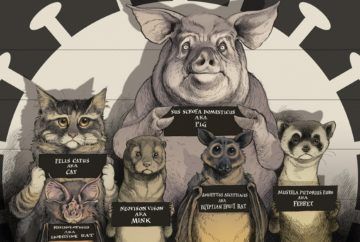Smriti Mallapatty in Nature:
 It was the news Sophie Gryseels had been dreading for months. Almost a year into the pandemic, a seemingly healthy wild mink tested positive for SARS-CoV-2 in Utah. No free-roaming animal was known to have caught the virus before, although researchers had been watching for this closely. “It’s happened,” wrote Gryseels, an evolutionary biologist at the University of Antwerp, Belgium, in an e-mail to her colleagues. Ever since the coronavirus started spreading around the world, scientists have worried that it could leap from people into wild animals. If so, it might lurk in various species, possibly mutate and then resurge in humans even after the pandemic has subsided.
It was the news Sophie Gryseels had been dreading for months. Almost a year into the pandemic, a seemingly healthy wild mink tested positive for SARS-CoV-2 in Utah. No free-roaming animal was known to have caught the virus before, although researchers had been watching for this closely. “It’s happened,” wrote Gryseels, an evolutionary biologist at the University of Antwerp, Belgium, in an e-mail to her colleagues. Ever since the coronavirus started spreading around the world, scientists have worried that it could leap from people into wild animals. If so, it might lurk in various species, possibly mutate and then resurge in humans even after the pandemic has subsided.
That would bring the tale of SARS-CoV-2 full circle, because wild animals probably brought it to humans in the first place. Strong evidence suggests that the virus originated in horseshoe bats (Rhinolophus spp.), possibly hitching a ride on other animals before infecting people1. In the current stage of the pandemic, with hundreds of thousands of confirmed COVID-19 infections every day, people are still driving transmission of SARS-CoV-2. But years from now, when community spread has been suppressed, a reservoir of SARS-CoV-2 in free-roaming animals could become a recalcitrant source of new flare-ups. Wild animals are not the only ones to have drawn scrutiny. Studies have shown that SARS-CoV-2 can infect many domesticated and captive creatures, from cats and dogs, to pumas, gorillas and snow leopards in zoos, and farmed mink. Outbreaks in mink farms have already shown that infected animals can pass the virus back to humans.
More here.
